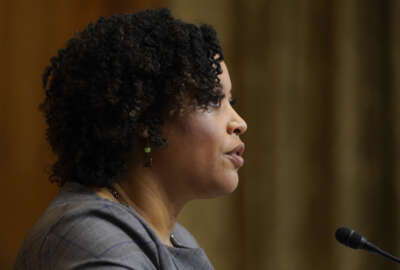State, Commerce data strategies underpin broader agency goals
The State Department and Commerce Department are both launching strategies to maximize the use of their data.
The State Department and Commerce Department are both launching strategies to maximize the use of their data.
The State Department’s enterprise data strategy, released Monday, outlines the central role data plays in emerging technology, and how it’s needed to remain competitive against global threats.
The strategy calls for greater access to data across the department, increased data fluency across the workforce, and better governance to ensure data security.
The strategy also links up with the department’s increased focus on emerging technologies — including artificial intelligence, 5G, sensor technology and cybersecurity — as part of its diplomatic mission, and as part of its goal of staying ahead of emerging threats. The strategy outlines four goals:
- Cultivate a data culture
- Accelerate decisions through analytics
- Establish mission-driven data management
- Establish enterprise data governance
Secretary of State Antony Blinken previewed the data strategy in July while speaking at the National Security Commission on AI’s Global Emerging Technology Summit.
The strategy, he said, would help the department use data “more effectively and more creatively for diplomacy.”
“If Netflix can predict what TV show my wife and I might choose to watch next, I think data can also help us and help the department predict maybe the next civil conflict, the next famine, the next economic crisis, and how we can respond more effectively,” Blinken said.
The department’s Enterprise Data Council, led by Chief Data Officer Matthew Graviss, will implement the strategy. The council will provide regular updates to Brian McKeon, the Deputy Secretary of State for Management and Resources.
McKeon wrote in the strategy’s executive summary that the department needs to invest in recruiting and training to make the workforce better understand how they use and maintain data.
“Our people require accurate data at their fingertips, where they are and when they need it. To thrive in this data-powered world, our team needs the skills, expertise, and tools to turn data into insights. To be sure, this mindset calls for a culture change in the department — one that has already begun,” McKeon wrote.
The strategy looks to empower the department’s workforce through upskilling the existing workforce and hiring for these in-demand skills. The department will update job descriptions to include expected data competencies, and will also create a new series of data science positions.
The strategy notes an increased demand in data from department executives to enable evidence-based decisions in diplomacy, security and human rights.
The strategy notes that the department has created nearly 900 dashboards supporting nearly 45,000 users for just one of its data visualization platforms.
“The department must support this growing appetite for data analysis and visualization by strengthening enabling capabilities, including data analytics training, data management, governance, scientific and data integrity, storage, and data sharing to facilitate the cultural and organizational shifts needed to adopt data-informed decision-making,” the strategy states.
Commerce data strategy underscores equity goals
The Commerce Department, meanwhile, putting its data to better understand how it’s serving the public. The department released a data strategy last week focused on equity challenges in job growth and distribution of resources to under-served communities.
Under the strategy, the department will hold regular summits looking at barriers that prevent greater use of federal data.
The strategy highlights the work the Census Bureau is already doing to promote equity through its Opportunity Project.
The bureau is also working with five agencies to coordinate data sprints with private-sector partners, and is also working on a toolkit focused on correcting sources of bias in federal data.
The data strategy also encompasses emerging goals, such as the National Oceanic and Atmospheric Administration’s recent focus on space commerce and getting high-quality data quickly from its satellites.
The strategy, however, also seeks to provide a common path forward for a department whose component agencies cover everything from the bottom of the ocean to the surface of the sun.
With that wide-ranging mission in mind, Thomas Beach, the department’s interim chief data officer, said Commerce won’t try to build an enterprise data analytics platform for the whole department, but will instead focus on existing platforms that exist across component agencies.
“As the CDO, I’ve constantly got to see where the eye toward vision is, and the vision has got to be about value,” Beach said during an ACT-IAC panel last week. “If I can’t deliver something of value across the organization, it’s not going to be understood why I have to play with others.”
Beach said the Commerce Data Governance Board, which created the data strategy, serves as a sounding board for common data challenges across its agencies and helps further a “Commerce helping Commerce” mantra.
“It’s really an opportunity to have fellow agencies sit next to each other and understand each other’s problems, and understand where they’re trying to go,” Beach said.
Copyright © 2024 Federal News Network. All rights reserved. This website is not intended for users located within the European Economic Area.
Jory Heckman is a reporter at Federal News Network covering U.S. Postal Service, IRS, big data and technology issues.
Follow @jheckmanWFED






